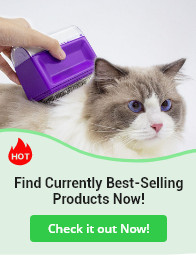When you consider the range of online marketplaces, two names consistently appear as top choices in industry analysis and seller communities: Etsy and Depop. While both are powerful, they demand very different skills and strategies. Choosing the right one is critical to your success.
Instead of a simple pros-and-cons list, this guide will walk you through the key business decisions you need to make. For each one, we'll look at how Etsy and Depop differ, helping you find the platform that truly aligns with your brand and personal strengths.

Page overview:
Decision #1: Your Customer — Who Do You Want to Talk To?
Decision #2: Your Product Strategy — What Makes You Stand Out?
Decision #3: Your Marketing — How Will You Get Noticed?
Decision #4: Your Operations — The Behind-the-Scenes Strategy
Decision #1: Your Customer — Who Do You Want to Talk To?
Before you sell anything, you need to know who you're selling to. The customers on Etsy and Depop are looking for completely different things.
The Etsy Customer is an "Artisan Seeker."
They come to the platform to find something special, unique, or custom-made that tells a story. They appreciate craftsmanship, quality materials, and a personal touch. They are often willing to pay a higher price for an item that feels one-of-a-kind.
The Depop Customer is a "Social Trendsetter."
Primarily Gen Z, they use the app like a social media feed. They discover brands through algorithm recommendations and what's currently trending in internet culture. They are seeking products that reflect their identity, aesthetic, and sense of belonging
The Takeaway: If you want to build deep connections with customers who appreciate quality and storytelling, choose Etsy. If you are well-versed internet culture and want to engage with a young, trend-driven audience, choose Depop.
Decision #2: Your Product Strategy — What Makes You Stand Out?
On both platforms, you can't just sell generic items. Your product strategy must be tailored to the platform's culture.
On Etsy, Success Comes from Originality & Personalization
Because the platform is full of unique items, your best bet is often a "semi-customizable" product. This could be a necklace you can engrave with initials, a sweatshirt you can embroider with a customer's pet, or art prints where the customer can choose the color scheme. This strategy gives you a unique selling proposition that's hard to copy.
On Depop, Success Comes from Speed & Cultural Relevance
It's less about creating something from scratch and more about curating what's trending right now. This means tapping into specific online "aesthetics" (like Y2K Revival, Dark Academia, or Cottagecore). Your products—whether it's a graphic tee, a specific style of sunglasses, or a crossbody bag—need to feel like a perfect fit for a trending TikTok video.
The Takeaway: If you see yourself as a creator of unique, lasting pieces, choose Etsy. If you see yourself as a curator of what's cool and current, choose Depop.
Decision #3: Your Marketing — How Will You Get Noticed?
Your marketing approach will be fundamentally different on each platform.
Etsy is a Marathon of Brand Building.
It's like running a high-end digital magazine. You need:.
- Stunning, professional photography with a consistent aesthetic.
- Storytelling product descriptions that highlight the quality and inspiration behind your products.
- Off-platform marketing through visual channels like Pinterest and targeted Meta ads that focus on lifestyle and aesthetics, not just discounts.
Depop is a Sprint of Content Creation.
It's like being a social media creator who also sells things. You need to:
- Post frequently and authentically. Use videos, model the clothes yourself (or with friends), and show your personality.
- Write captions like you're talking to a friend. Use casual language and relevant hashtags.
- Engage constantly. Like other posts, follow people, and be an active member of the community. Your visibility is tied to your social activity.
The Takeaway: If you are a patient brand-builder with an eye for photography and writing, choose Etsy. If you are a fast-moving social media native who loves creating content, choose Depop.
Decision #4: Your Operations — The Behind-the-Scenes Strategy
This is where many new sellers get stuck. Here are the specific operational details you need to master for each platform.
The Quiet Luxury / Etsy Challenge: Vetting for Quality.
- Always Order Samples: Never sell a premium item you haven't held, worn, and washed yourself.
- Ask Technical Questions: Ask potential suppliers about fabric composition (e.g., "What is the exact percentage?") and fabric weight (GSM). Professional suppliers can answer this..
- Use Premium Pricing Psychology: Price items at $98, not $100. Frame your price as a great value compared to designer brands. Never go on sale; offer "value-adds" like free premium shipping instead.
The Streetwear / Depop Challenge: Managing Speed and Originality.
- Become a Trend Spotter: Explore niche communities on Reddit (r/streetwearstartup), Discord, and TikTok to see what's bubbling up before it goes mainstream. The best ideas often come from outside of fashion—from gaming, movies, or memes.
- Choose Your POD Partner Wisely: Not all Print-on-Demand hoodies are the same. Look for suppliers that offer premium blank garments (like AS Colour or Comfort Colors) and have high-quality DTG printing for vibrant colors.
- Stay within Copyright Safe Boundaries: Never copy a design directly. Instead, create an "homage" that captures a feeling, or use artwork and images from the "public domain" (like vintage art or classical paintings) to create something new and 100% safe.
The Solution: A Smart Supply Chain for Any Platform
As you can see, both paths have unique operational challenges. Whether you need to source high-quality unbranded products for Etsy or launch trend-responsive designs for Depop, the bottleneck is often the supply chain.
This is where a modern dropshipping partner becomes essential.
For example, a dropshipping platform like EPROLO is designed to solve these exact problems.
For an Etsy seller, you can source high-quality "blank" jewelry or apparel and focus your energy on the unique design and branding.
For a Depop seller, you can use Print-on-Demand (POD) integrations to launch new designs instantly with zero inventory risk.
Ultimately, long-term success on either platform depends on creating a memorable brand experience. A cheap poly-mailer diminishes the perceived value of both a $98 necklace and a $50 hoodie. A small investment in the unboxing—like using EPROLO to add your logo and custom-branded packaging—justifies the premium price on Etsy and builds the brand loyalty on Depop needed to survive past a single trend.
So, Which Path Should You Take?
By now, you should have a much clearer idea. The right platform is the one that aligns with your natural skills and the brand you dream of building.
Choose Etsy if you are a: patient brand-builder, a skilled storyteller, and have a good eye for aesthetics.
Choose Depop if you are a: fast-moving content creator, deeply connected to internet culture, and love the thrill of the trend cycle.
The platform is just the stage; your brand and your operations are what will make you a star. Ready to build your boutique with a smart foundation? Explore EPROLO's product catalog and branding features to find the tools you need for your success.







